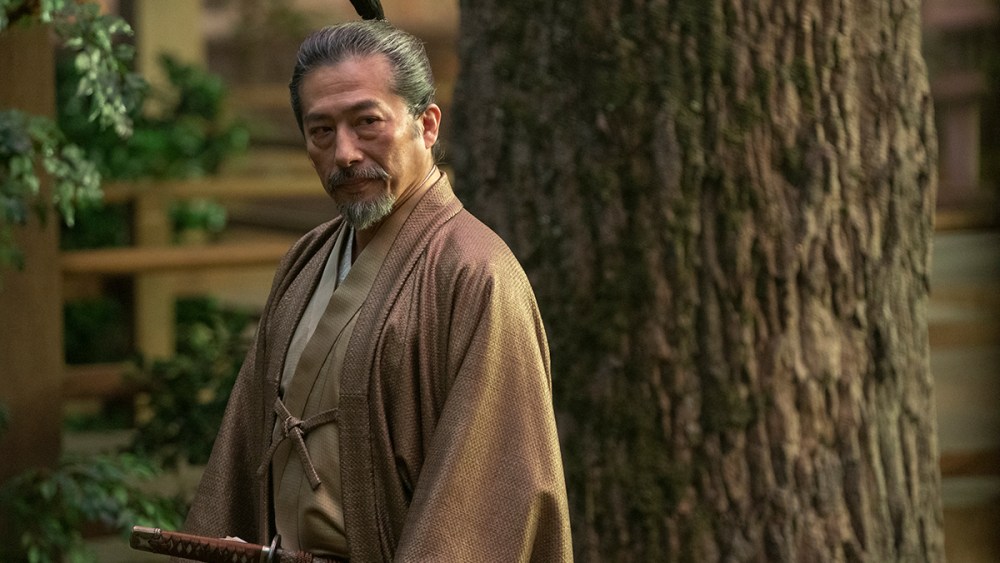FX’s acclaimed miniseries “Shōgun,” now nearing its halfway point, sports a score quite unlike Maurice Jarre’s music for the 1980 original adaptation. While utilizing authentic Japanese instruments, the music takes a very modern approach that applies today’s technology and advanced sonic manipulation in ways that were impossible four decades ago.
Oscar-winner Atticus Ross (“The Social Network,” “Soul”), his brother Leopold Ross (“The Book of Eli”) and their collaborator Nick Chuba (“Dr. Death”) worked for more than two years on the 10-episode miniseries, about a shipwrecked Englishman trying to survive in the feudal-warfare era of 17th-century Japan.
The producers initially asked for something “epic” and assumed that automatically meant “orchestra,” but the Ross brothers had a less conventional approach in mind. “We could do something a bit more unique and match the scale without necessarily having to default to a big orchestra,” Atticus Ross tells Variety.
“We wanted it to be less about place and period and more about scale and psychology,” Leopold adds. “Not only the psychology of the characters but also the psychology of the audience. We felt that if you did go the traditional Japanese route, the audience would feel very comfortable. When the Erasmus washes up on the shores of Japan, we wanted the audience to feel this incredible kind of wonder and unease that the crew feels.”
They did months of research into traditional Japanese music and sounds, notably Gagaku — the imperial court music of the time — and recruited California-born, Japan-based arranger-producer Taro Ishida to visit multiple sites around the country and record Gagaku music (and, in at least one case, the vocal sounds of chanting monks).
“We had a sense of the palette of sounds and an idea of how we could bring that into our world in an interesting way,” Leopold says. The trio wrote various themes and musical ideas, sent them to Ishida to have them recorded, but also sent atmospheric pieces for the Japanese ensembles to improvise upon.
“All that effort was not toward making ‘period Japanese music,’ rather to make sure that on a cellular level the textures in the score were authentic,” Atticus explains . “We then took those recordings and through heavy processing, resampling and manipulation created our own universe — playable sample banks — a palette of sound specifically designed towards the language of the show. The goal was to create music that cannot be identified as ancient or modern nor specifically Eastern or Western. We wanted it to exist between the lines, playing primarily to the psychology of character and story.
“Texturally, we are in the right place in terms of time and instrumentation, but we are also threading that needle of being free enough to do something that is wholly original,” Atticus adds. “To acknowledge its time and place but not be constrained by it, and also not be a kind of pastiche” that might be condemned as cultural appropriation.
The “Shōgun” score finds the Ross brothers and Chuba employing classic Japanese material in a modern way by processing the sounds and incorporating them into an overall, electronically created—using a mix of analog and digital devices—soundscape that fulfills the dramatic needs of the story.
Virtually every main character has his or her own theme: the marooned sailor Blackthorne (Cosmo Jarvis), the powerful Lord Toranaga (Hiroyuki Sanada), translator Mariko (Anna Sawai), the scheming Yabushige (Tadanobu Asano), Toranaga’s rival Ishido (Takehiro Hira), the late ruler’s widow Lady Ochiba (Fumi Nikaido), plus secondary themes for the Blackthorne-Mariko relationship and ancient Japan respectively.
Chuba cited a fascinating musical connection between the character of Toranaga and the music of the period. Original author James Clavell based Toranaga on the real-life shogun Tokugawa Ieyasu, who lived during the late 16th and early 17th centuries and who was responsible for reviving the Gagaku music traditions that largely disappeared during the civil wars that preceded his rise to power.
Some of the traditional instruments that can be heard from time to time in the score are the zither-like koto; the shakuhachi, ryuteki and hichiriki flutes; the stringed shamisen, biwa and kokyu; and the massive traditional taiko drums.
“It was done more like a 10-hour movie than episodic television,” Atticus explains, “so the architecture of the score, in terms of when character themes start emerging, could be quite carefully delineated. There was no pressure in that kind of revolving-door TV process where the next episode’s coming out and you’re racing to try and finish. On this, there was a long period [of writing] and then everything got mixed together at the end.”
There are at least four hours of original music in “Shōgun,” produced over a year of sketches, research and recording in Japan plus another year of writing and scoring the individual episodes. Leopold calls it “a year of quite intensive collaboration with [showrunner] Justin Marks,” especially on topics like how to approach the action scenes.
“The last thing we wanted to do was stick ‘drums of war’ underneath an action scene,” says Atticus. “We essentially treated it more as horror, punctuating moments but allowing the [frequently graphic] visuals to drive [the scenes],” Leopold adds.

